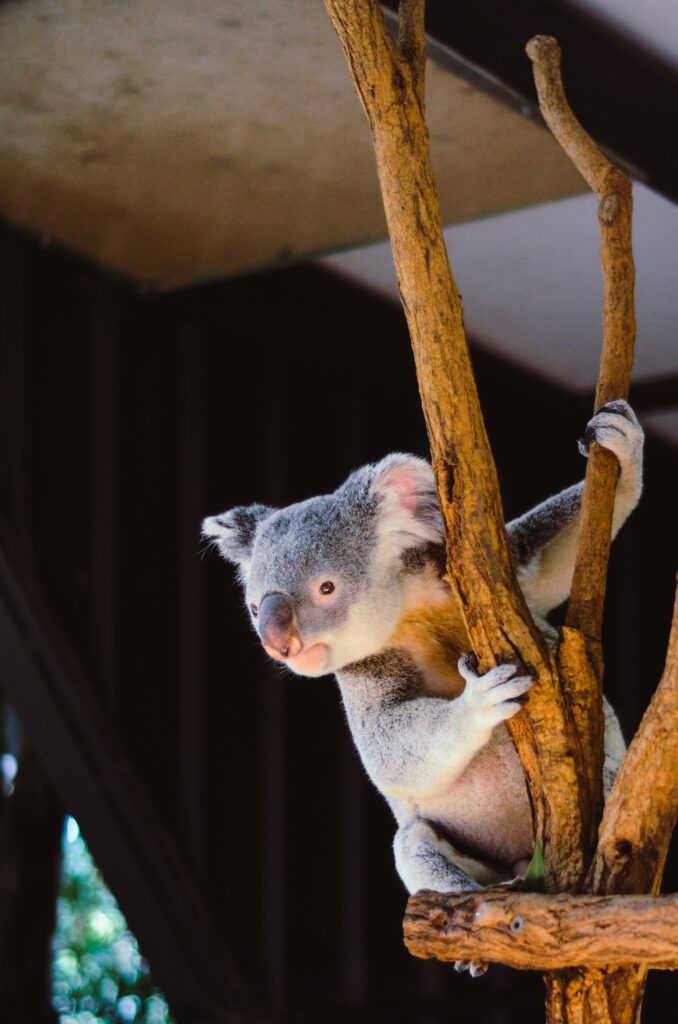Ever thought about how you get poo from a Koala ten meters up a tree?
This is the second of my five-part series about my life with Koalas. In Part I –“Let the Science Begin,” I talked about what makes koalas so unique and the challenge I took on to try and work out how they survived on their inhospitable diet of Eucalyptus leaves.
In this part, the story continues and answers the question:
How you get samples of poo from koalas that are normally 10-20 meters up a tree?
Read on dear friends …
The scene had been set; I had a plan of attack to start my ground-breaking research on why and how their caecum (equivalent to our appendix), which is up to 2 meters in length, helps them digest their food. I was so excited I could not wait to start.
*****
Some important background information:
Nearly all digestion in the digestive tract, not only of koalas but of every living mammal, is done by anaerobic or facultative anaerobic bacteria. These bacteria do not cope well with oxygen; they lack the necessary enzymes to cope with air.
They are also the bacteria that usually cause foul smells associated with rotten and decaying food (which produce those characteristic odours when you go to the toilet!)
As you can imagine this causes a bit of a problem when you want to study bacteria from an organ of an animal that is a long way up a tree!
*****
“Just hang in the tree,” he said!
I vividly remember the conversations with my supervisor about how to get samples. There was even a discussion at one stage of climbing up a tree, trying to position myself under a koala’s butt with a net ready to catch their poo.
Yeah, like that was going to happen!
“Have you seen the claws on those beasts?” I commented, “You want me to hang on for grim death in a tree for who knows how long, waiting for a koala to poo and then hope that I catch it, put it in a jar as quickly as possible (because the bugs don’t do well in oxygen)?”
“Are you freaking crazy?”
The claws on a koala are like those of a big bear (which is the only resemblance they have to a bear; they are not bears). How else could they hang on when it was windy and stuck up in a tree?
The idea was especially insane for two more reasons. One, when koalas are scared, their instinct is to climb higher, and two, although they look placid and calm, you do not want to upset a koala. They (especially the males) can get quite ‘agro’ when they feel threatened!
The Eureka moment!
A few days later, I had what researchers call a ‘Eureka moment’ —that moment when you have such a great idea that it could change the course of the world. What was that moment, you ask?
By pure chance, I was watching a TV program about a sanctuary in Victoria that had just been given a grant for improvements and expansion.
Guess what? They had a healthy population of koalas, all within reaching distance (like the one shown in the feature image).
It was the perfect set-up, at least for some initial studies on their gut flora and for comparing it to that of other animals that used a caecum for digestion.
The sanctuary located in Healesville, Victoria was very helpful and keen to support the research. Their only requirement was that I take the samples in the morning as soon as they opened to minimize the inconvenience to patrons.
It was no problem; it suited me better. I could collect my samples and return to the lab to process them on the same day to minimize the time they would be exposed to an unfavourable environment with even small amounts of oxygen.
Let the poo-catching begin
So there I was, plastic sheet on the ground, strategically positioned under a koala’s butt, armed with a pair of forceps and ready to pounce on anything that came my way.
This was all much to the amusement of tourists who came to see the enclosure, and on many occasions, I had to try and explain to tourists (whose first language was not English) what in the hell I was doing!
It was not successful, but it made them smile in absolute disbelief.
– These qu-azzy Aws..rrali-ains catch poo from kw-o-oaolas!
Even the koalas seemed to be bemused. After a few scratches on the head (which they loved) and letting them sniff my head a few times, we got it worked out, and I got my samples.
I made several trips to see them over a period of about a year. There is nothing like a crisp Autumn morning with condensation on your breath and the stillness of the morning, interrupted only by the chomp, chomp of koalas eating leaves to get your blood going.
We became good mates, and I was sad when it ended. What did I find? You may be surprized.
Well, tune in to Part 3: How the Koala digests its food (and what does that caecum do anyway?)
You Can Help:
I am writing this series in the hope of raising some money, which I will contribute to the Australian Koala Foundation. If you want to make a donation, the best way is to make a donation (cup of coffee) at Ko-fi. I love coffee. I don’t know if koalas do, but we can change it to a Eucalyptus tea!!!!
Don’t miss out on Part 3.
Hope to see you back. Don’t miss out. Stay subscribed and add your thoughts or any comments you have (especially if you have something nice to say!) on the social media links (Linked In or Facebook).
Till next time, thanks for reading,
Calvin
[Copyright ©2024 The Compliance Concierge]
Share this post: on Twitter on Facebook on Google+


